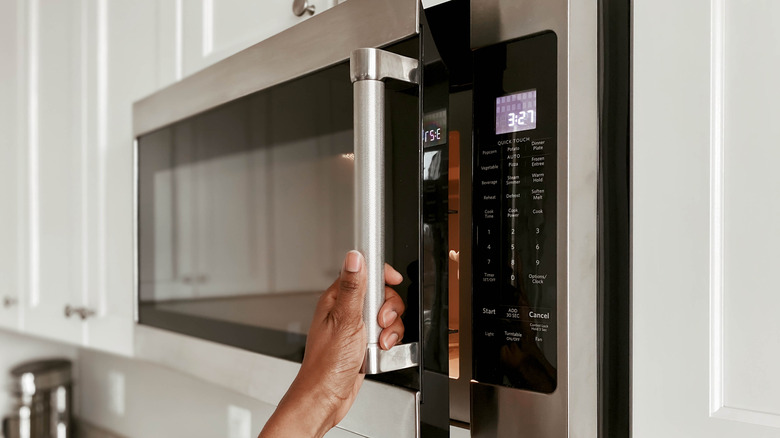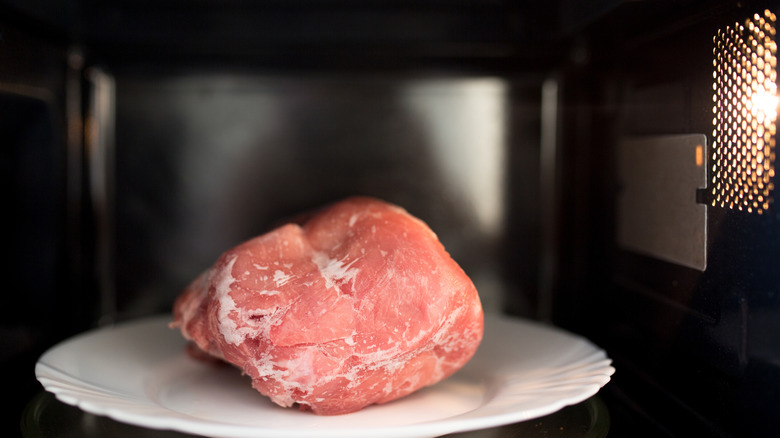The Dangerous Microwave Mistake You're Probably Still Making
All kinds of mistakes haunt our kitchens, either past, potential, or future foibles, ranging from big to small or catastrophic. Fortunately, microwaves lessen the stress with relatively no-fuss cooking; just program and push the start button. They're also culinary superheroes for quickly defrosting meal components in a pinch. The exception is when raw meat is involved in any way, shape, or form. If so, it's time to remember kitchen warnings of "food in the danger zone."
The infamous danger zone is where perishable foods reach temperatures between 40 and 140 degrees Fahrenheit, the point at which bacteria thrive and begin to multiply. Inside a microwave, the juices of raw meats can carry those detrimental, sometimes deadly, bacteria, dribbling them over surfaces of your appliance. In that vein, you're probably still making a dangerous microwave mistake that involves defrosting meats and reheating other foods.
Say you need to thaw a raw chuck roast quickly, and you turn to the microwave. The outside layers of meat may defrost more quickly than the thicker middle, potentially sending the soft warmer portions into the dreaded danger zone. The juices and exterior portions can now come into contact with microwave surfaces, depositing harmful bacteria. You continue on your merry way, cooking that roast to perfection and enjoying a delicious dinner. Later comes dessert or leftovers, which get popped into the same microwave oven and onto the same bacteria-laden glass turntable plate. That's instant cross-contamination.
Safer ways to defrost and reheat
A somewhat reliable way to avoid cross-contamination is to thoroughly wash the turntable and entire interior of a microwave after cooking or defrosting meat. Consider purchasing a second or even third turntable to have on hand, designating one for meats only. Fortunately, an ounce of prevention is a sure-fire way of avoiding cross-contamination mistakes inside a microwave oven, and that means defrosting meats in less precarious ways.
The first defrosting approach is the safer one, though not always practical in busy households. It avoids the microwave altogether, opting instead for slower methods. Ideally, you'd know the dinner menu a full day ahead, leaving plenty of time to thaw meat overnight in the refrigerator. The general gauge is 24 defrosting hours for every 5 pounds of frozen meat. To lessen that time, it helps to set your fridge temperature at 40 instead of 35 degrees and to avoid colder sections. Those could be the bottom rack (since warm air tends to rise) the top section if you have a built-in ice maker.
The second method is cold water thawing, which is more hands-on and time-consuming. The meat goes into a sturdy, well-sealed container, fully immersed in cold water that's replaced and replenished about every half hour until thawed. As for using hot water or leaving meat to thaw on a kitchen counter — nope, never. Similar principles apply to thawing frozen seafood, though typically smaller portions may allow shorter time frames.

